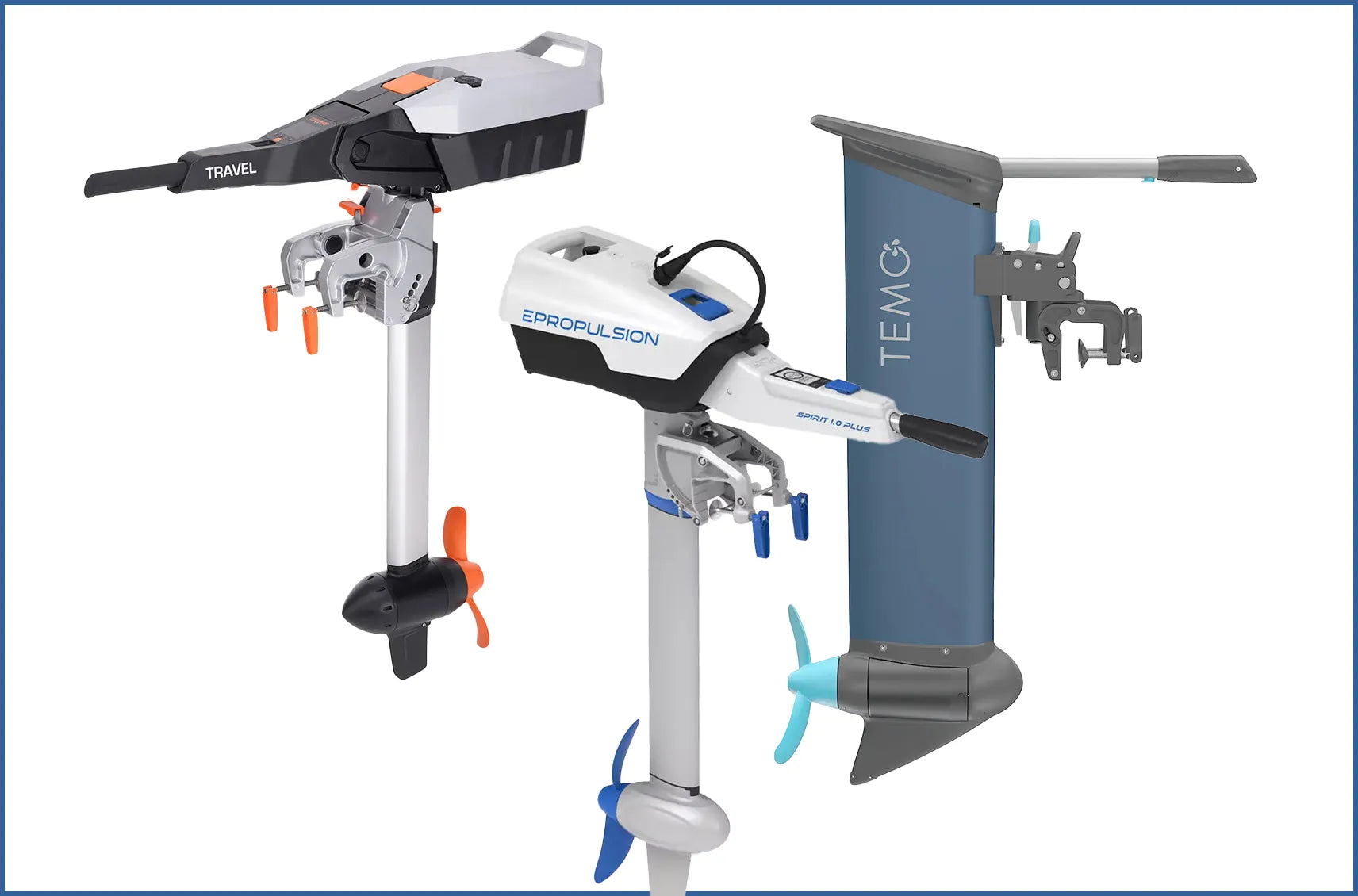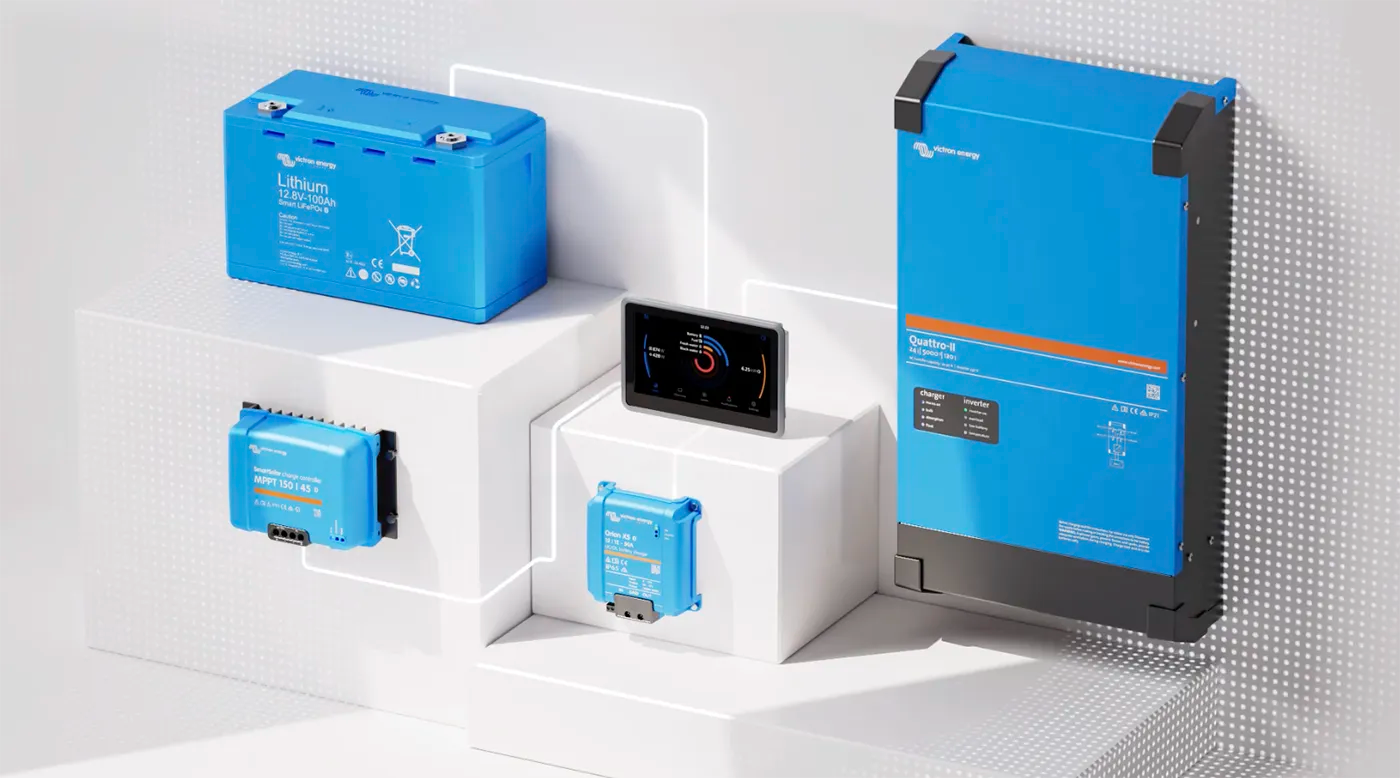Is the MultiPlus Smart?
The short answer? No.
The long answer? It can be. With the right components and setup, you can view system performance, manage settings, and receive alerts—all remotely.
Below is a step-by-step guide to making your MultiPlus a smart device.
Components You’ll Need
GX Device
This is the central hub that connects all your devices and communicates data to the Victron VRM Portal and your phone.
GX Touch or VRM Portal
The GX Touch provides local monitoring with a touchscreen interface, while the VRM Portal allows remote access via your phone or computer. It's ideal for on-site access, allowing users to instantly check system performance and make adjustments without needing an internet connection.
The VRM (Victron Remote Management) portal enables remote monitoring and control from anywhere with an internet connection. It’s perfect for managing multiple systems or monitoring your system while away, offering detailed historical data, alarms, and advanced analytics for system optimization.
Victron SmartShunt
A battery monitor that tracks battery state-of-charge, voltage, current, and more. It sends data to the GX device and can be viewed on the VictronConnect app.
When a SmartShunt and a Cerbo GX are both connected to a MultiPlus-II inverter/charger, the data shared becomes more integrated, providing a comprehensive view of the entire energy system. The SmartShunt continues to send detailed battery data, while the MultiPlus-II adds system-level information. The key data includes:
- Battery Voltage, Current, and SOC: The SmartShunt measures this and provides precise battery monitoring.
- Power Flow Status: The MultiPlus-II adds data about the power flow between the inverter/charger, AC loads, and the grid (or generator), including whether it's in inverter or charger mode.
- Grid/Generator Input: Information about how much power is being drawn from or supplied to the grid or generator.
- AC Loads: The power being used by connected AC loads is tracked by the MultiPlus-II.
- Solar Input (if applicable): If connected to a solar charge controller, data about solar generation is also integrated.
- State of System: The Cerbo GX collects data from both devices to provide an overview of the entire system, such as the overall battery health, power being generated, stored, and consumed, and the current mode (inverting, charging, grid-tied, etc.).
Battery Management System (BMS)
This monitors and protects lithium batteries from overcharge, over-discharge, and excessive temperatures, integrating smoothly with the MultiPlus.
Victron lithium batteries come with an integrated BMS, but an external BMS offers more capabilities than an integrated BMS, particularly for larger, more complex systems. It can manage multiple battery banks, integrate with other Victron components, and provide advanced system-wide protection and control.
In contrast, an integrated BMS is limited to managing the individual battery it's built into, offering less scalability and flexibility.
Victron Battery Protect
Safeguards your batteries by disconnecting non-critical loads when the voltage is too low.
Required Cables
These include the VE.Direct, VE.Bus, and VE.Can cables to connect the SmartShunt, MultiPlus, and BMS to the Cerbo GX.
Step-by-Step: Connecting the Devices
Connect the Cerbo GX to the MultiPlus via VE.Bus
The Cerbo GX will act as the communication hub. Using a VE.Bus cable, connect the Cerbo GX to the MultiPlus. Connect the SmartShunt via VE.Direct: Install the Victron SmartShunt on the negative battery terminal to monitor battery parameters. Then, use a VE.Direct cable to connect the SmartShunt to the Cerbo GX.
Set Up the BMS
If you're using lithium batteries, connect the Victron BMS to the Cerbo GX using the VE.Can or VE.Direct cable, depending on your model. The BMS will protect the battery by controlling charging and discharging.
Integrate BatteryProtect
Connect the Victron BatteryProtect between the batteries and any non-critical loads. Use the BMS to communicate with BatteryProtect for automated disconnection if battery voltage drops too low.
GX Touch or VRM Portal
If you prefer local monitoring, connect the GX Touch to the Cerbo GX for a real-time display of your system. For remote access, configure the VRM Portal through the Cerbo GX, allowing you to view and control the system from anywhere via the internet.
What You Can Monitor and Control
Once everything is connected, you will have access to a wide range of data and control options through your phone via the VictronConnect app or the VRM Portal:
Inverter/Charger Status: View the MultiPlus's current mode (charging, inverting, standby), power input/output, and error messages.
- Battery State of Charge (SOC): Track battery voltage, current, SOC, and remaining capacity via the SmartShunt and BMS.
- Energy Flow: Monitor real-time energy flow from your batteries, solar panels (if connected), and shore power to your loads and inverter.
- Alerts and Alarms: Receive notifications on low voltage, high temperature, or system faults through the VRM Portal.
- Remote Control: Change inverter settings, such as enabling or disabling charging or adjusting charge limits, from anywhere using the VRM Portal.
By following these steps and installing the necessary components, you can turn your Victron MultiPlus into a fully integrated smart system. With real-time monitoring, control, and alerts available at your fingertips, you'll be able to optimize and protect your power setup with ease.



